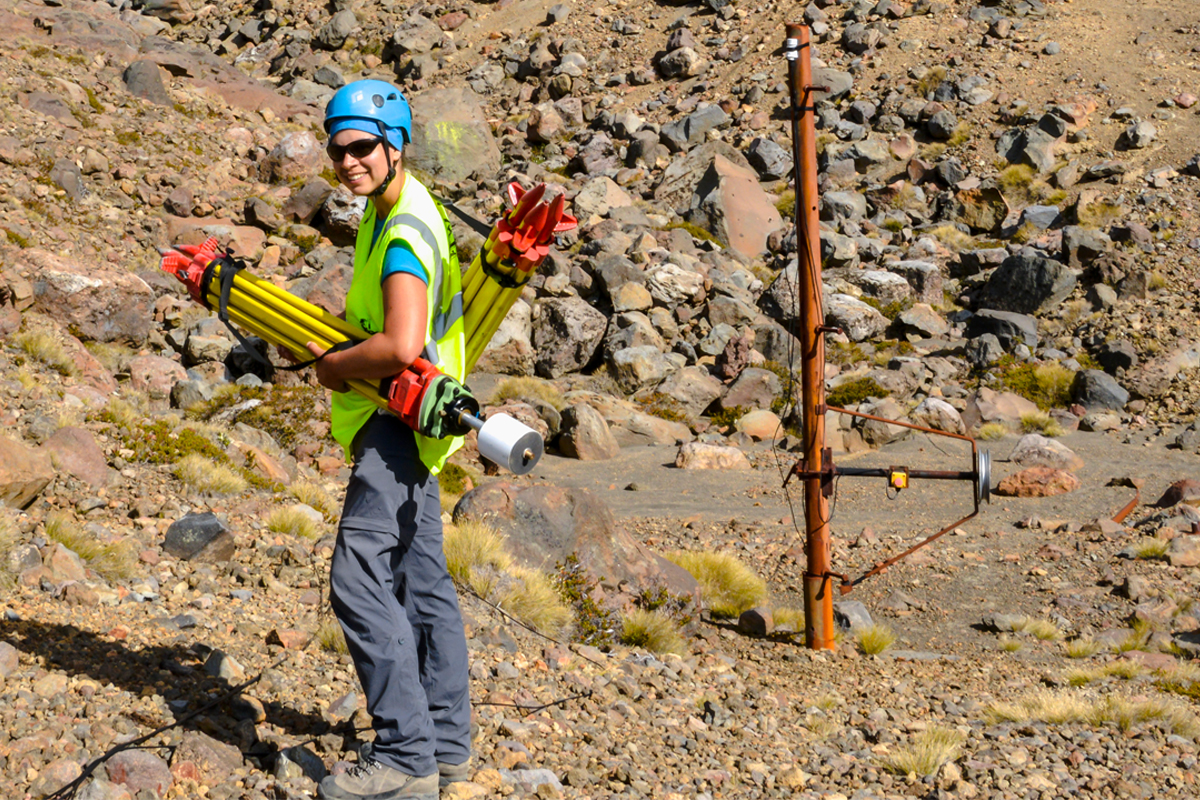All Categories
Featured
Table of Contents
Geophysical Surveys in Forrestfield Western Australia 2020

The primary design for the radial structure of the interior of the Earth is the initial reference Earth model (PREM). Some parts of this model have been updated by recent findings in mineral physics (see post-perovskite) and supplemented by seismic tomography. The mantle is primarily composed of silicates, and the limits in between layers of the mantle are consistent with stage shifts.

Schematic of Earth's magnetosphere. Circulations from left to.
Inside the magnetosphere, there are reasonably thick regions of solar wind particles called the Van Allen radiation belts. Geophysical measurements are generally at a particular time and place. Accurate measurements of position, in addition to earth contortion and gravity, are the province of geodesy. While geodesy and geophysics are different fields, the two are so carefully connected that many clinical companies such as the American Geophysical Union, the Canadian Geophysical Union and the International Union of Geodesy and Geophysics encompass both.
Geophysical Methods in Sinagra Australia 2023
A three-dimensional position is determined utilizing messages from 4 or more visible satellites and referred to the 1980 Geodetic Recommendation System. An alternative, optical astronomy, combines astronomical coordinates and the local gravity vector to get geodetic collaborates. This approach just supplies the position in 2 collaborates and is harder to use than GPS.
Relative positions of two or more points can be identified utilizing very-long-baseline interferometry. Gravity measurements entered into geodesy due to the fact that they were needed to related measurements at the surface area of the Earth to the recommendation coordinate system. Gravity measurements on land can be made using gravimeters released either on the surface or in helicopter flyovers.
Water level can likewise be measured by satellites utilizing radar altimetry, adding to a more accurate geoid. In 2002, NASA released the Gravity Healing and Climate Experiment (GRACE), where 2 twin satellites map variations in Earth's gravity field by making measurements of the range in between the two satellites using GPS and a microwave ranging system. , which are studied through geophysics and area physics.
Geophysics Definition & Meaning in West Perth Oz 2022

Given that geophysics is worried with the shape of the Earth, and by extension the mapping of features around and in the planet, geophysical measurements include high accuracy GPS measurements. When the geophysical measurements have been processed and inverted, the interpreted results are outlined using GIS.
Numerous geophysics companies have designed in-house geophysics programs that pre-date Arc, GIS and Geo, Soft in order to fulfill the visualization requirements of a geophysical dataset. Expedition geophysics is used geophysics that frequently utilizes remote sensing platforms such as; satellites, airplane, ships, boats, rovers, drones, borehole picking up devices, and seismic receivers.
For circumstances, aeromagnetic data (aircraft gathered magnetic information) gathered using traditional fixed-wing aircraft platforms should be remedied for electromagnetic eddy currents that are produced as the airplane moves through Earth's magnetic field. There are also corrections connected to modifications in determined prospective field strength as the Earth turns, as the Earth orbits the Sun, and as the moon orbits the Earth.
Uses For Geophysical Data in Ashfield WA 2020
Signal processing includes the correction of time-series data for unwanted sound or errors presented by the measurement platform, such as airplane vibrations in gravity information. It also includes the decrease of sources of noise, such as diurnal corrections in magnetic data., meteorology, and physics.
The magnetic compass existed in China back as far as the fourth century BC. It was used as much for feng shui when it comes to navigation on land. It was not till great steel needles might be created that compasses were utilized for navigation at sea; prior to that, they could not retain their magnetism enough time to be beneficial.
By taking a look at which of eight toads had the ball, one could determine the instructions of the earthquake. It was 1571 years before the first style for a seismoscope was published in Europe, by Jean de la Hautefeuille. It was never ever constructed. Among the publications that marked the start of contemporary science was William Gilbert's (1600 ), a report of a series of careful experiments in magnetism.
Geophysicist Jobs in Leeming WA 2023
In 1687 Isaac Newton published his, which not just laid the foundations for classical mechanics and gravitation Likewise explained a range of geophysical phenomena such as the tides and the precession of the equinox. The very first seismometer, an instrument efficient in keeping a constant record of seismic activity, was developed by James Forbes in 1844. Dietmar; Sdrolias, Maria; Gaina, Carmen; Roest, Walter R. (April 2008). "Age, spreading rates, and spreading out asymmetry of the world's ocean crust". Geochemistry, Geophysics, Geosystems. 9 (4 ): Q04006. Bibcode:2008 GGG ... 9. 4006M. doi:10. 1029/2007GC001743. S2CID 15960331. "Earth's Inconstant Magnetic Field". science@nasa. National Aeronautics and Space Administration. 29 December 2003. Retrieved 13 November 2018.
Leipzig. Berlin (Gebruder Borntraeger). Runcorn, S.K, (editor-in-chief), 1967, International dictionary of geophysics:. Pergamon, Oxford, 2 volumes, 1,728 pp., 730 fig Geophysics, 1970, Encyclopaedia Britannica, Vol. 10, p. 202-202 Ross 1995, pp. 236242 Shearer, Peter M. (2009 ). Intro to seismology (2nd ed.). Cambridge: Cambridge University Press. ISBN 9780521708425. Stphane, Sainson (2017 ).
Latest Posts
Geological And Geophysical Surveys in Mullaloo Western Australia 2023
Geophysical Surveys & Mapping - Ecs Limited in Rockingham WA 2020
Marine Geophysicist in Iluka Aus 2020